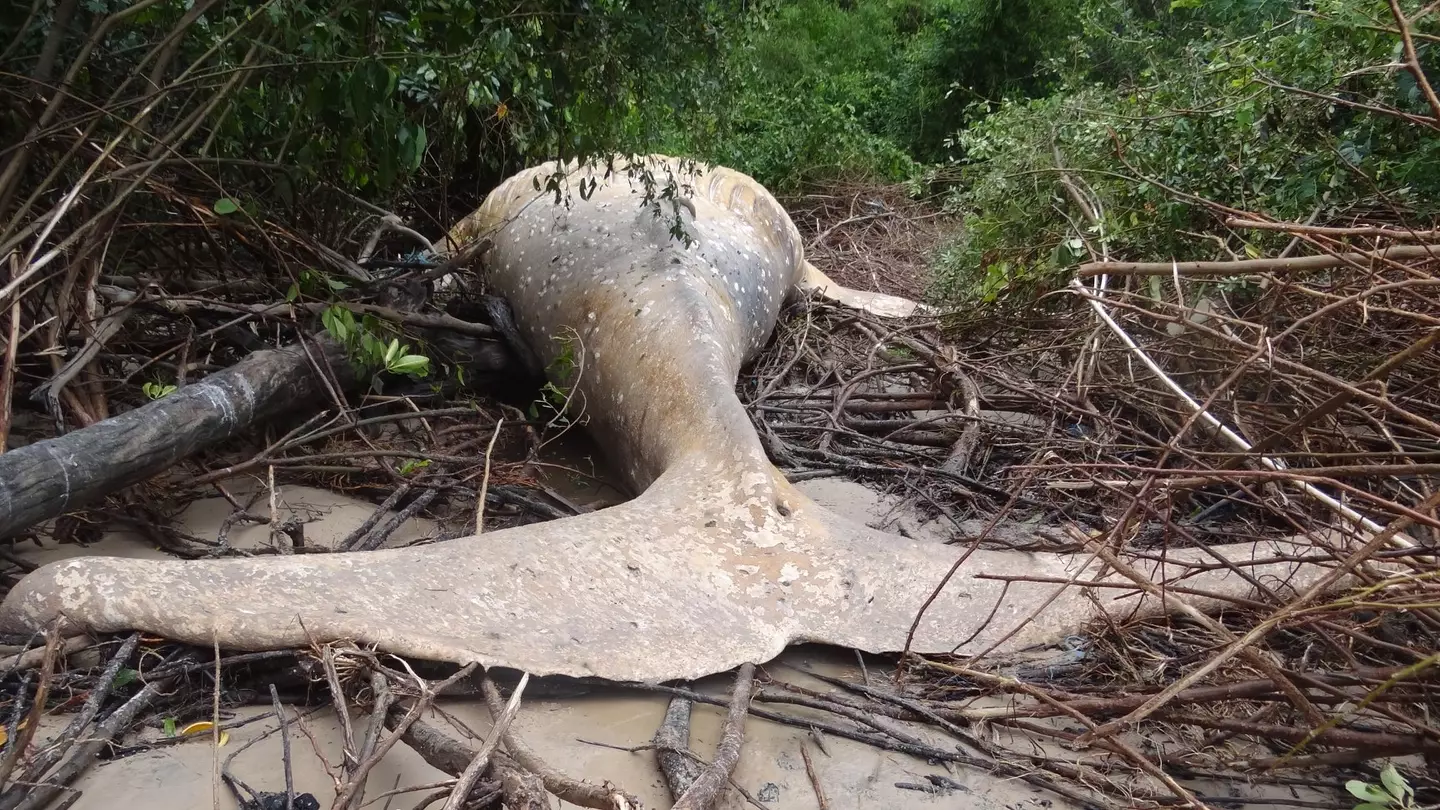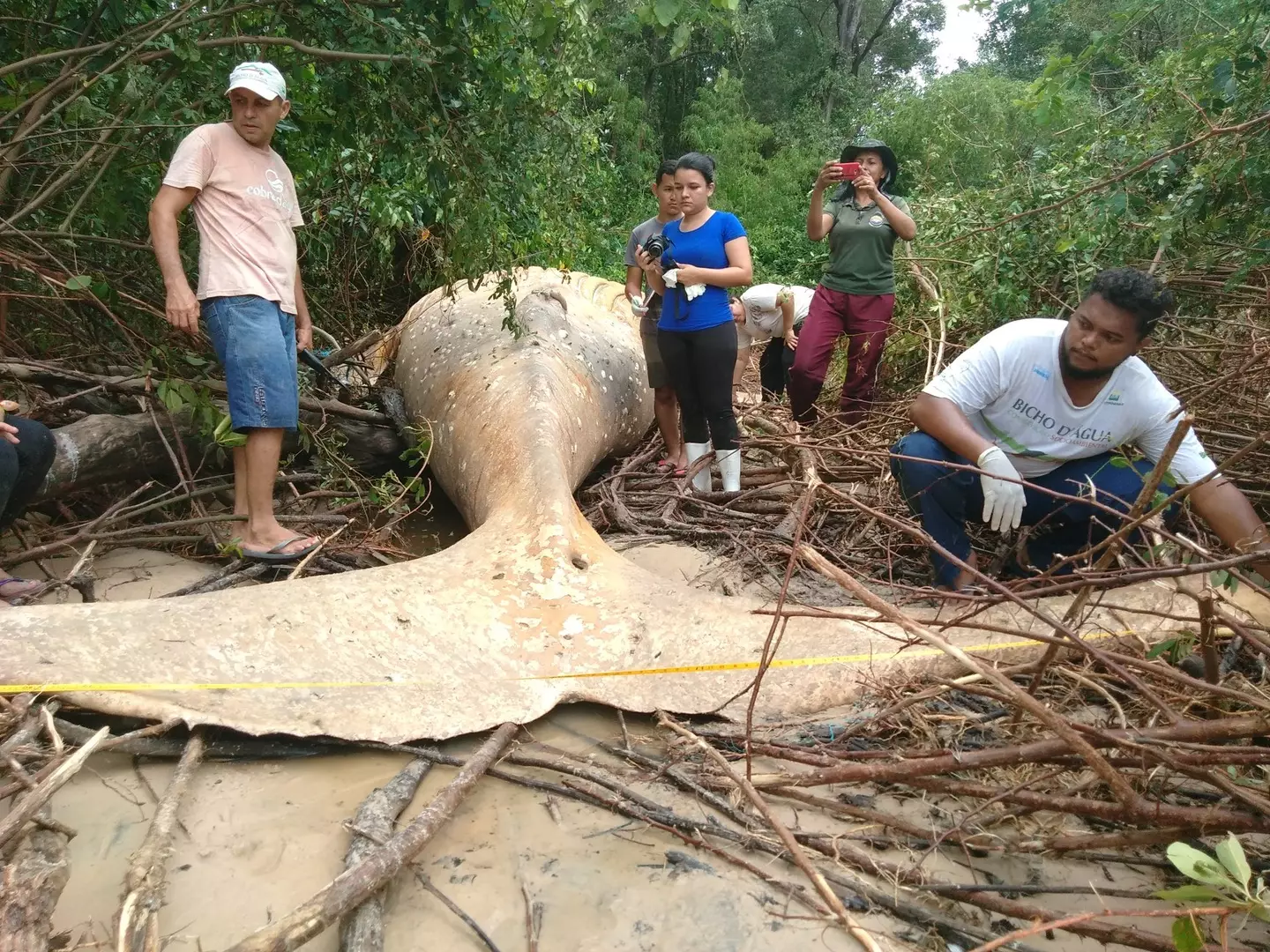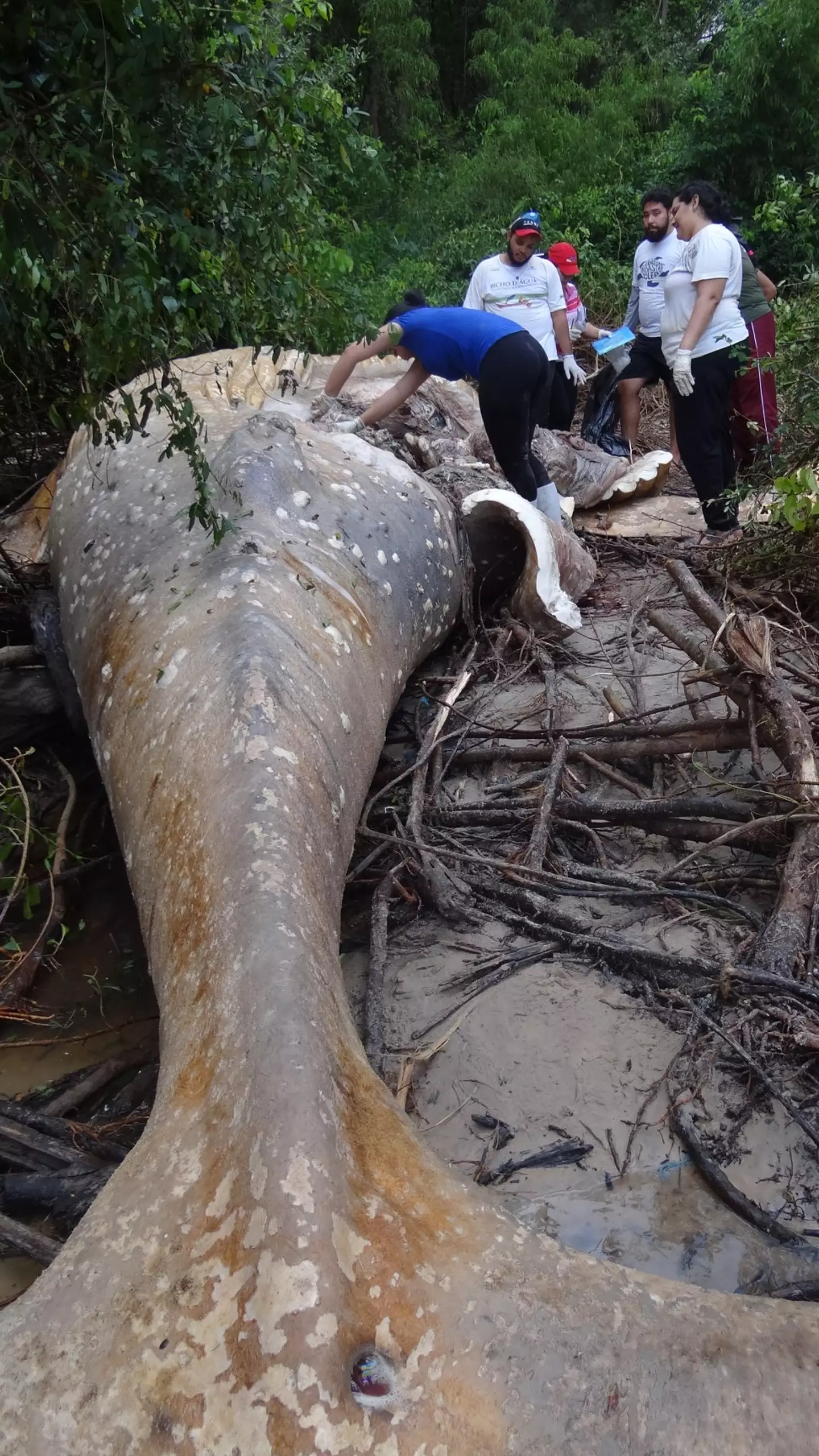Finding a whale in the middle of the jungle is very unexpected.
But this actually happened in the Amazon rainforest back in 2019.
A whale carcass measuring 36 feet was discovered well outside of its natural habitat, and nobody has any idea how it actually got there.

Bicho D’água
The sad incident took place on the island of Marajo, at the mouth of the Amazon river. The humpback – which weighed 10 tonnes – was found at a place called Araruna Beach in the undergrowth.
There are a number of theories about how the whale – which was discovered 50ft from the sea – got there.
The best guess that scientists can come up with is that the creature was thrown out of the water and up into the woods by rough seas.
But to try and fully understand what happened, a team of specialists travelled to the location to try to ascertain how the poor whale died.
While there, the experts estimated that the whale was a 12-month-old calf, but they struggled to understand how it had died.
The team, sent by the NGO Bicho D’Agua Institute, published a Facebook post that suggested that the animal could have got tangled up in the mangroves after being tossed ashore onto the island.
Meanwhile, the Maritime Herald newspaper suggested that the whale could have died from eating plastics in the ocean.
Dirlene Silva, from SEMMA – the Brazilian environmental, health, and sanitation department – told local media: “We only found the whale because of the presence of scavenging birds of prey.
“The vultures were spotted circling above the carcass which was found hidden in the bush some distance from the sea.”

Bicho D’água
Bicho D’Agua’s president and marine specialist Renata Emin said: “We’re still not sure how it landed here, but we’re guessing that the creature was floating close to the shore and the tide, which has been pretty considerable over the past few days, picked it up and threw it inland, into the mangrove.
“Along with this astonishing feat, we are baffled as to what a humpback whale is doing on the north coast of Brazil during February because this is a very unusual occurrence.”
The team were particularly perplexed over this because whales are usually in the Bahia area between August and November. They then migrate up to Antarctica.

Bicho D’água
Emin continued: “Humpback whales don’t usually travel to the north. We have a record of one appearing in the area three years ago, but it’s rare.
“We believe this is a calf which may have been travelling with its mother and probably got lost or separated during the migratory cycle between the two continents.”

.png)








